#Data analytics
Explore tagged Tumblr posts
Text
Exactly!!

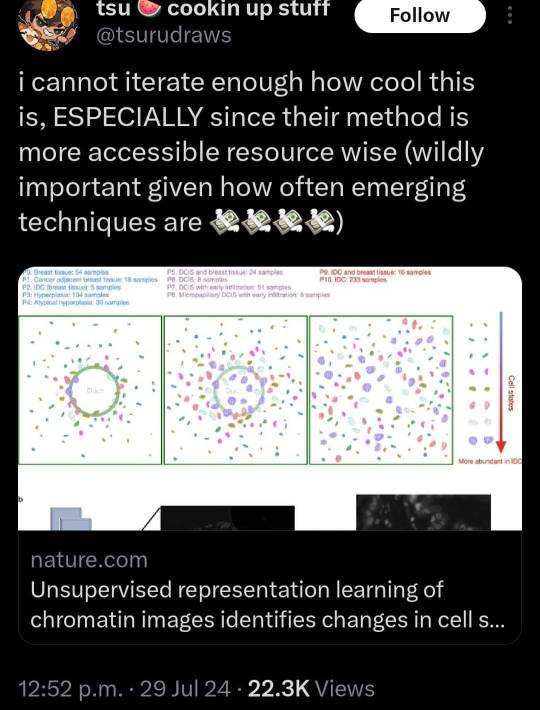

166K notes
·
View notes
Text
Smosh Video Stats from January 1 - June 30
Smosh Pit


Smosh Games


Smosh Overall


-Marathons weren’t included in the count as those were filmed in 2023.
-This is to recount how often we see Smosh members in half a year, despite this being made in August.
-The Smosh main announcement + Smosh sitcom trailer was included in the count.
-The count is based off of the desc. of who appears in every video.
-Lives and Members Exclusive videos aren’t included in the count.
-Angela & Chanse were credited for the tell-all episode of Smosh Mouth despite the desc. saying Amanda & Shayne.
#Smosh#smoshblr#video stats#data analytics#ian hecox#anthony padilla#shayne topp#courtney miller#amanda lehan canto#angela giarratana#arasha lalani#chanse mccrary#keith leak jr#olivia sui#spencer agnew#tommy bowe#trevor evarts#damien haas#smosh games#smosh pit
171 notes
·
View notes
Text
Why the Number Zero Changed Everything
Zero: a concept so foundational to modern mathematics, science, and technology that we often forget it wasn’t always there. Its presence in our world today seems obvious, but its journey from controversial abstraction to indispensable tool has shaped entire civilizations.
1. The Birth of Zero: A Revolutionary Idea
The concept of zero didn't exist in many ancient cultures. For example, the Greeks, despite their advancements in geometry and number theory, rejected the idea of a placeholder for nothingness. The Babylonians had a placeholder symbol (a space or two slashes) for zero, but they didn't treat it as a number. It wasn't until Indian mathematicians in the 5th century, like Brahmagupta, that zero was truly conceptualized and treated as a number with its own properties.
Zero was initially used as a place-holder in the decimal system, but soon evolved into a full-fledged number with mathematical properties, marking a huge leap in human cognition.
2. The Birth of Algebra
Imagine trying to solve equations like x + 5 = 0 without zero. With zero, algebra becomes solvable, opening up entire fields of study. Before zero’s arrival, solving equations involving unknowns was rudimentary, relying on geometric methods. The Indian mathematician Brahmagupta (again) was one of the first to establish rules for zero in algebraic operations, such as:
x + 0 = x (additive identity)
x × 0 = 0 (multiplicative property)
These properties allowed algebra to evolve into a system of abstract thought rather than just arithmetic, transforming the ways we understand equations, functions, and polynomials.
3. Calculus and Zero: A Relationship Built on Limits
Without zero, the foundation of calculus—limits, derivatives, and integrals—wouldn’t exist. The limit concept is intrinsically tied to approaching zero as a boundary. In differentiation, the derivative of a function f(x) is defined as:
f'(x) = \lim_{h \to 0} \frac{f(x+h) - f(x)}{h}
This limit process hinges on the ability to manipulate and conceptualize zero in infinitesimal quantities. Similarly, integrals, which form the backbone of area under curves and summation of continuous data, rely on summing infinitely small quantities—essentially working with zero.
Without the concept of zero, we wouldn’t have the means to rigorously define rates of change or accumulation, effectively stalling physics, engineering, and economics.
4. Zero and the Concept of Nothingness: The Philosophical Impact
Zero is more than just a number; it’s an idea that forces us to confront nothingness. Its acceptance was met with philosophical resistance in ancient times. How could "nothing" be real? How could nothing be useful in equations? But once mathematicians recognized zero as a number in its own right, it transformed entire philosophical discussions. It even challenged ideas in theology (e.g., the nature of creation and void).
In set theory, zero is the size of the empty set—the set that contains no elements. But without zero, there would be no way to express or manipulate sets of nothing. Thus, zero's philosophical acceptance paved the way for advanced theories in logic and mathematical foundations.
5. The Computing Revolution: Zero as a Binary Foundation
Fast forward to today. Every piece of digital technology—from computers to smartphones—relies on binary systems: sequences of 1s and 0s. These two digits are the fundamental building blocks of computer operations. The idea of Boolean algebra, where values are either true (1) or false (0), is deeply rooted in zero’s ability to represent "nothing" or "off."
The computational world relies on logical gates, where zero is interpreted as false, allowing us to build anything from a basic calculator to the complex AI systems that drive modern technology. Zero, in this context, is as important as one—and it's been essential in shaping the digital age.
6. Zero and Its Role in Modern Fields
In modern fields like physics and economics, zero plays a crucial role in explaining natural phenomena and building theories. For instance:
In physics, zero-point energy (the lowest possible energy state) describes phenomena in quantum mechanics and cosmology.
In economics, zero is the reference point for economic equilibrium, and the concept of "breaking even" relies on zero profit/loss.
Zero allows us to make sense of the world, whether we’re measuring the empty vacuum of space or examining the marginal cost of producing one more unit in economics.
7. The Mathematical Utility of Zero
Zero is essential in defining negative numbers. Without zero as the boundary between positive and negative values, our number system would collapse. The number line itself relies on zero as the anchor point, dividing positive and negative values. Vector spaces, a fundamental structure in linear algebra, depend on the concept of a zero vector as the additive identity.
The coordinate system and graphs we use to model data in statistics, geometry, and trigonometry would not function as we know them today. Without zero, there could be no Cartesian plane, and concepts like distance, midpoint, and slope would be incoherent.
#mathematics#math#mathematician#mathblr#mathposting#calculus#geometry#algebra#numbertheory#mathart#STEM#science#academia#Academic Life#math academia#math academics#math is beautiful#math graphs#math chaos#math elegance#education#technology#statistics#data analytics#math quotes#math is fun#math student#STEM student#math education#math community
62 notes
·
View notes
Text















Im a bit late but I did a thing and made an Ao3 wrapped, I liked crunching the numbers :3
#formula 1#archive of our own#top gun maverick#max verstappen#charles leclerc#lestappen#2024 wrapped#data analytics#fanfiction
40 notes
·
View notes
Text
Currently in a "love"/"hate" relationship with James Vowels if all the reports coming out of the media about Logan and true right now.
You can scroll through my posts and see how good Logan has been doing all year.... especially when you consider his car never gets upgraded and has been way over weight compared to his competitors.
But what has James done since Bahrain? Nothing but talk crap to the media about Logan. Took his car away in Australia, constantly let's rumors fly and starts them about replacing him, spent all of his energy chasing Sainz and then gushing about him to anyone with a Mic.
Like damn James what the hell did you expect Logan to do? Further more the fact that he refuses to acknowledge Logan is indeed performing with a cement brick of a car is so sad.
Logan has crashed twice all year, which is a major improvement.
100 notes
·
View notes
Text
AI exists and there's nothing any of us can do to change that.
If you have concerns about how AI is being/will be used the solution is not to abstain - it's to get involved.
Learn about it, practice utilising AI tools, understand it. Ignorance will not protect you, and putting your fingers in your ears going 'lalalala AI doesn't exist I don't acknowledge it' won't stop it from affecting your life.
The more the general population fears and misunderstands this technology, the less equipped they will be to resist its influence.
#ai#artificial intelligence#ai technology#tech#technology#singularity#futurism#datascience#data analytics#data harvesting#manipulation#civil rights#civil disobedience#ai discourse
165 notes
·
View notes
Text

Ninja, robots, pirates, magic
I made an interactive visualization on the 100 most popular comics at the Brooklyn Public Library for January 2025. The full 100 is also here on Medium. Top manga 1. Demon slayer = Kimetsu no yaiba Volume 1 by Koyoharu Gotoge, 2019 2. One piece by Eiichirō Oda, 2023 3. Spy x family. 1, Mission 1 by Tatsuya Endo, 2020 4. My hero academia. Vol. 1, Izuku Midoriya: Origin by Kōhei Horikoshi, 2015 5. Spy x family. Vol. 12 by Tatsuya Endō, 2024 6. Demon slayer. 23, Life shining across the years by Koyoharu Gotoge, 2021 7. Naruto. Vol. 1, The tests of the ninja by Masashi Kishimoto, 2023 8. Jujutsu kaisen. Volume 1, Ryomen Sukuna by Gege Akutami, 2019 9. Spy x family. Volume 11 by Tatsuya Endō, 2024 10. Dragon ball super. 1, Warriors from Universe 6! by Akira Toriyama, 2017
Top Marvel checkouts
Guardians of the Galaxy Volume 3, DVD, 2023
Ant-Man and the Wasp: Quantumania, DVD, 2023
Miles Morales, Straight out of Brooklyn by Saladin Ahmed, 2019
Black Panther: Wakanda Forever, DVD, 2021
Spider-Man: No Way Home, DVD, 2022
Doctor Strange in the Multiverse of Madness, DVD, 2022
Ms. Marvel. 1, No normal by G Willow Wilson, 2014
Spider-Man. Vol. 1, Miles Morales by Brian Michael Bendis, 2016
Thor: Love and Thunder, DVD, 2022
Other graphic novels
Heartstopper Volume 5 by Alice Oseman, 2023
Heartstopper Volume 2 by Alice Oseman, 2020
Heartstopper Volume 3 by Alice Oseman, 2021
Heartstopper Volume 4 by Alice Oseman, 2021
The Girl From the Sea by Molly Knox Ostertag, 2021
The Twisted Ones by Scott Cawthon, 2021
Five Nights at Freddy’s, Fazbear Frights, The Fourth Closet by Chris Hastings, 2022
Heartstopper Volume 1 by Alice Oseman, 2020
Five Nights at Freddy’s, Fazbear Frights, Graphic Novel Collection Vol. 1 by Scott Cawthon, 2022
The Princess and the Grilled Cheese Sandwich by Deya Muniz, 2023
#comics#manga#books & libraries#books and reading#books#comic books#comic book art#graphic narrative#lgbtq community#data analytics#data visualization#public libraries
21 notes
·
View notes
Text

Big fan of @wouldyoufuckthisfurry, so here's an impromptu chart of the furries thus far!
Data disclaimer: this chart contains both ongoing polls and completed polls, and compares the two indiscriminately
#shitposting#196#data analytics#furry#furries#would you fuck this furry#you _should_ be able to click the image to read text more clearly#I put all the originating media in the alt text#so if you're confused about the character named “The Cow”#check the image description
15 notes
·
View notes
Text
youtube
How To Learn Math for Machine Learning FAST (Even With Zero Math Background)
I dropped out of high school and managed to became an Applied Scientist at Amazon by self-learning math (and other ML skills). In this video I'll show you exactly how I did it, sharing the resources and study techniques that worked for me, along with practical advice on what math you actually need (and don't need) to break into machine learning and data science.
#How To Learn Math for Machine Learning#machine learning#free education#education#youtube#technology#educate yourselves#educate yourself#tips and tricks#software engineering#data science#artificial intelligence#data analytics#data science course#math#mathematics#Youtube
22 notes
·
View notes
Text
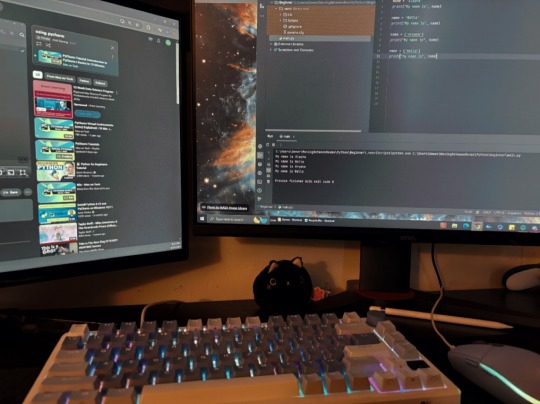
Hey everyone! enjoying my (two) week break of uni, so I've been lazy and playing games. Today, working on Python, I'm just doing repetition of learning the basics; Variables, Data types, Logic statements, etc. Hope everyone has a good week!
#codeblr#coding#python#university#uni life#studying#datascience#data analytics#data analysis#studyblr#student life#study motivation#study blog#student
77 notes
·
View notes
Text
It's #BiScienceFriday and today we're doing a deep-dive into some delicious data!
#lgbt#queer#bisexuality#bi#lgbtq#bi pride#lgbtqia#bi visibility#representationmatters#bisexual#lgbt pride#state of the union#bivisibility#research#data#datascience#data analytics#queer community
30 notes
·
View notes
Text
data analysis is rly like
it's so over we're so back it's so over we're so back it's so over
i know, i know, negative results don't make my work any less valid but cmon please give me something
#science#stem#stemblr#academia#studyblr#neuroscience#stem student#data#data analytics#data analysis#research
45 notes
·
View notes
Text
Amanda Lehan-Canto's shipping data analytics on fanfiction (AO3)


Angela Giarratana's shipping data analytics on fanfiction (AO3)


-Note: Romantic pairings exclusive
-This is accurate to August 9/10: 11:12 PM-12:59 AM (PST)
-In the analytics this includes characters they play
-Fanfictions will appear multiple times based on how many relationship tags it appears in
-Disclaimer: This is not meant to comment on which ship is better and nor is anything listed supposed to prove something.
General thoughts: I made this because I'm such a huge fucking nerd and love data/analytics. I'm not sure if this is interesting to anyone else, but I made it so I might as well share it. I find it interesting how for Amanda's pie chart I had no idea who would be 2nd/3rd due to overlooking Sarah Christ and Redacted. For Angela I knew full well Courtney and Damien would at least rank.
Bonus: Amangela AO3 Stats in certain categories
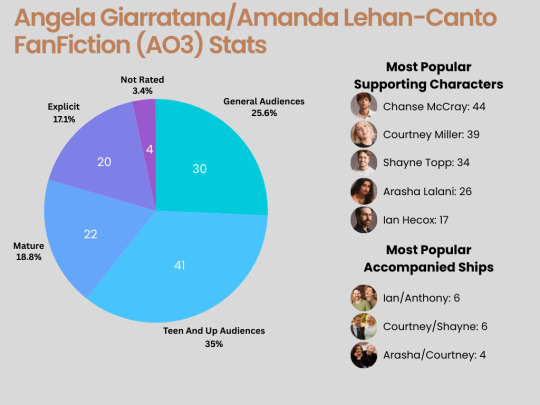
146 notes
·
View notes
Text
The Math of Social Networks: How Social Media Algorithms Work
In the digital age, social media platforms like Instagram, Facebook, and TikTok are fueled by complex mathematical algorithms that determine what you see in your feed, who you follow, and what content "goes viral." These algorithms rely heavily on graph theory, matrix operations, and probabilistic models to connect billions of users, influencers, and posts in increasingly intricate webs of relationships.
Graph Theory: The Backbone of Social Networks
Social media platforms can be visualized as graphs, where each user is a node and each connection (whether it’s a "follow," "like," or "comment") is an edge. The structure of these graphs is far from random. In fact, they follow certain mathematical properties that can be analyzed using graph theory.
For example, cliques (a subset of users where everyone is connected to each other) are common in influencer networks. These clusters of interconnected users help drive trends by amplifying each other’s content. The degree of a node (a user’s number of direct connections) is a key factor in visibility, influencing how posts spread across the platform.
Additionally, the famous Six Degrees of Separation theory, which posits that any two people are connected by no more than six intermediaries, can be modeled using small-world networks. In these networks, most users are not directly connected to each other, but the distance between any two users (in terms of number of connections) is surprisingly short. This is the mathematical magic behind viral content, as a post can be shared through a small network of highly connected individuals and reach millions of users.
Matrix Operations: Modeling Connections and Relevance
When social media platforms recommend posts, they often rely on matrix operations to model relationships between users and content. This process can be broken down into several steps:
User-Content Matrix: A matrix is created where each row represents a user and each column represents a piece of content (post, video, etc.). Each cell in this matrix could hold values indicating the user’s interactions with the content (e.g., likes, comments, shares).
Matrix Factorization: To make recommendations, platforms use matrix factorization techniques such as singular value decomposition (SVD). This helps reduce the complexity of the data by identifying latent factors that explain user preferences, enabling platforms to predict what content a user is likely to engage with next.
Personalization: This factorization results in a model that can predict a user’s preferences even for content they’ve never seen before, creating a personalized feed. The goal is to minimize the error matrix, where the predicted interactions match the actual interactions as closely as possible.
Influence and Virality: The Power of Centrality and Weighted Graphs
Not all users are equal when it comes to influencing the network. The concept of centrality measures the importance of a node within a graph, and in social media, this directly correlates with a user’s ability to shape trends and drive engagement. Common types of centrality include:
Degree centrality: Simply the number of direct connections a user has. Highly connected users (like influencers) are often at the core of viral content propagation.
Betweenness centrality: This measures how often a user acts as a bridge along the shortest path between two other users. A user with high betweenness centrality can facilitate the spread of information across different parts of the network.
Eigenvector centrality: A more sophisticated measure that not only considers the number of connections but also the quality of those connections. A user with high eigenvector centrality is well-connected to other important users, enhancing their influence.
Algorithms and Machine Learning: Predicting What You See
The most sophisticated social media platforms integrate machine learning algorithms to predict which posts will generate the most engagement. These models are often trained on vast amounts of user data (likes, shares, comments, time spent on content, etc.) to determine the factors that influence user interaction.
The ranking algorithms take these factors into account to assign each post a “score” based on its predicted engagement. For example:
Collaborative Filtering: This technique relies on past interactions to predict future preferences, where the behavior of similar users is used to recommend content.
Content-Based Filtering: This involves analyzing the content itself, such as keywords, images, or video length, to recommend similar content to users.
Hybrid Methods: These combine collaborative filtering and content-based filtering to improve accuracy.
Ethics and the Filter Bubble
While the mathematical models behind social media algorithms are powerful, they also come with ethical considerations. Filter bubbles, where users are only exposed to content they agree with or are already familiar with, can be created due to biased algorithms. This can limit exposure to diverse perspectives and create echo chambers, reinforcing existing beliefs rather than fostering healthy debate.
Furthermore, algorithmic fairness and the prevention of algorithmic bias are growing areas of research, as biased recommendations can disproportionately affect marginalized groups. For instance, if an algorithm is trained on biased data (say, excluding certain demographics), it can unfairly influence the content shown to users.
#mathematics#math#mathematician#mathblr#mathposting#calculus#geometry#algebra#numbertheory#mathart#STEM#science#academia#Academic Life#math academia#math academics#math is beautiful#math graphs#math chaos#math elegance#education#technology#statistics#data analytics#math quotes#math is fun#math student#STEM student#math education#math community
24 notes
·
View notes
Text
VERY IMPORTANT ANALISYS FOR GAYMERS
A while back i felt a lil annoyed that the hit game Valorant with quite the money pool diddn't have a gay agent and so i put my self in the field, by trying to find the gayest agent. Have fun.

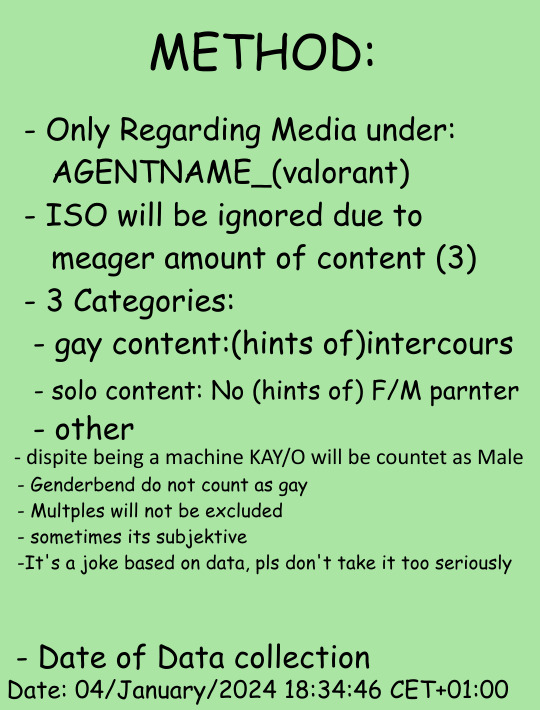
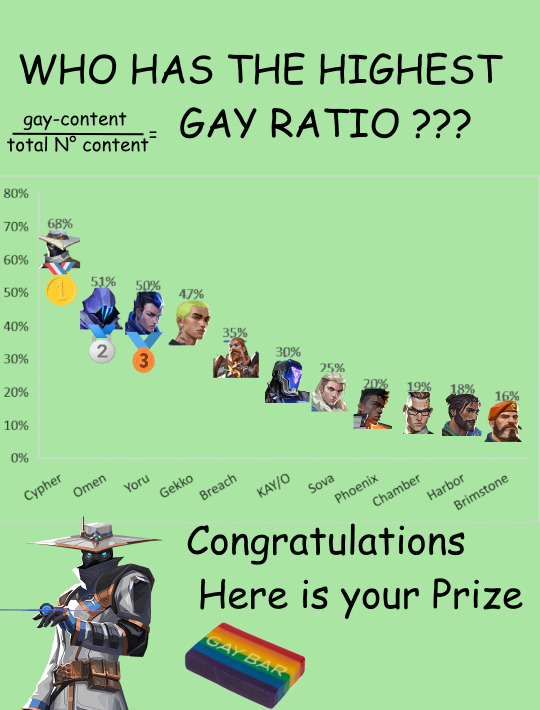

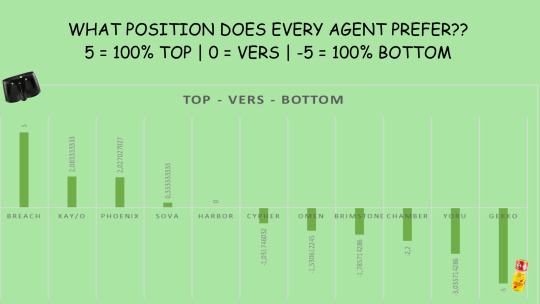

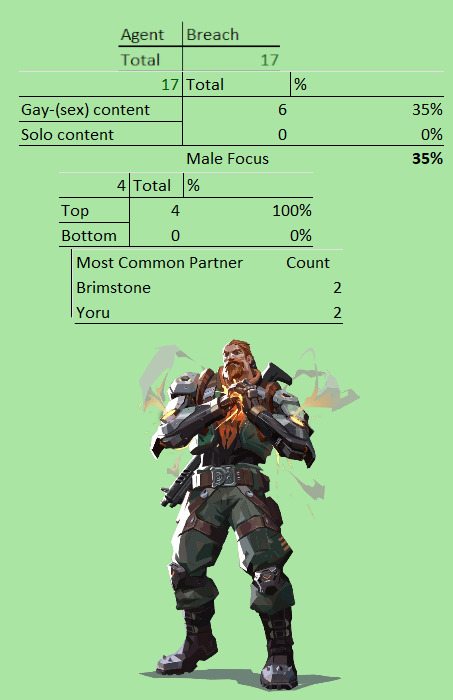
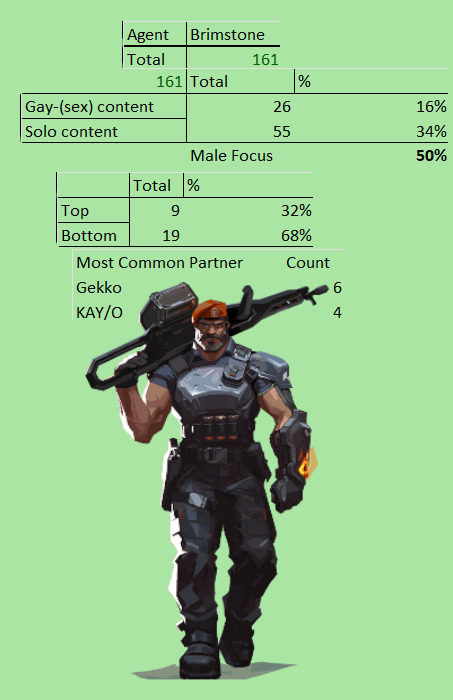
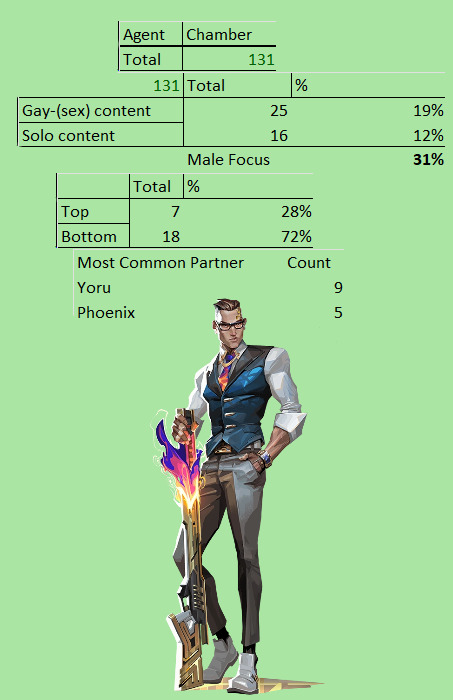
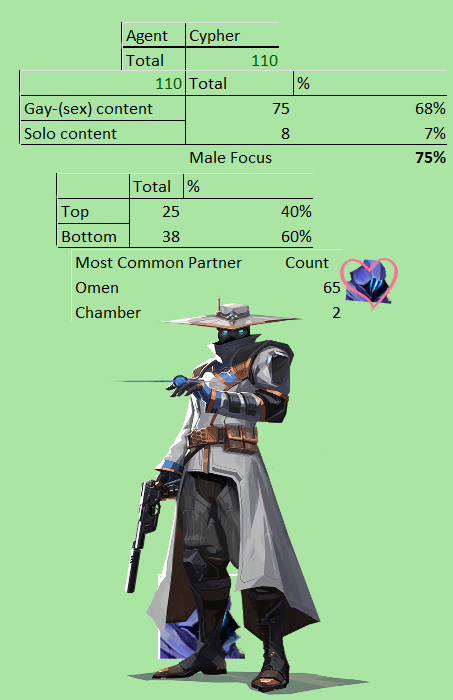

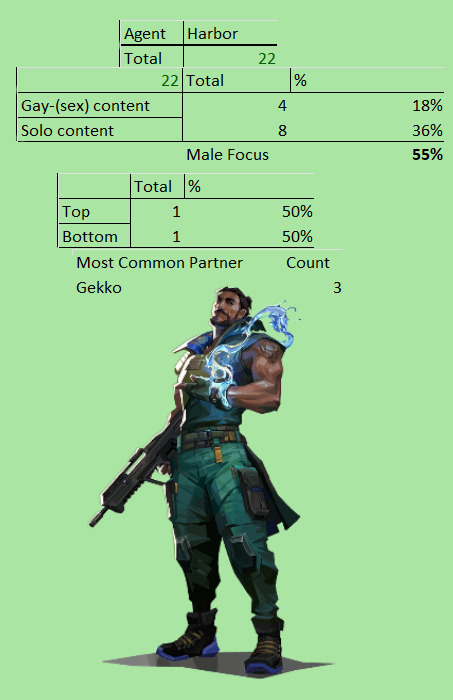
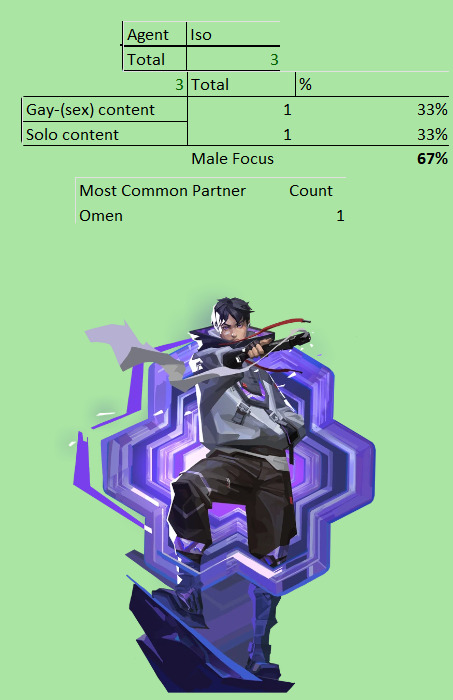
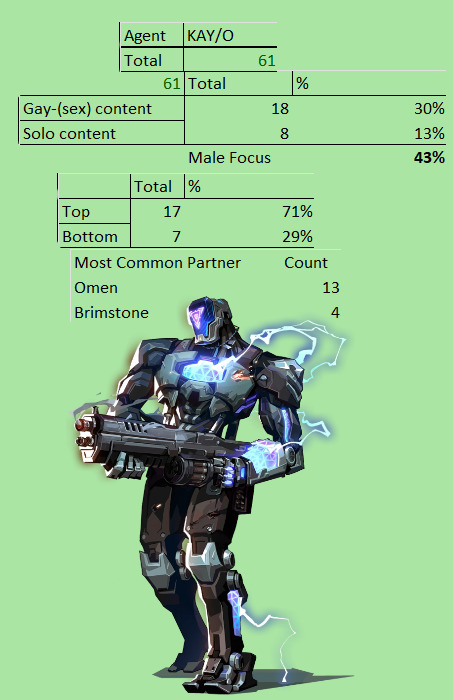
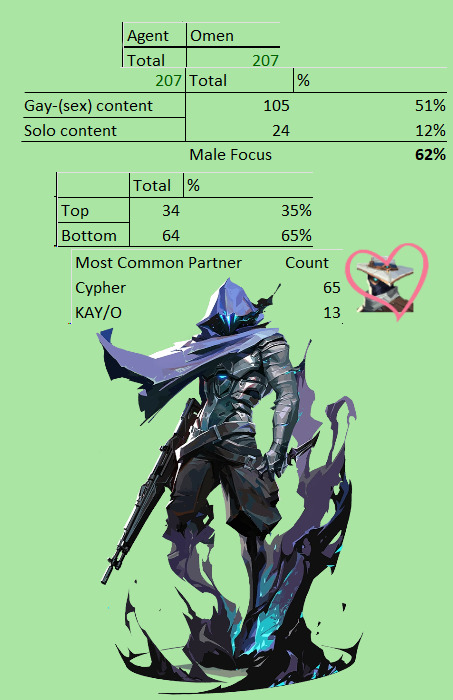

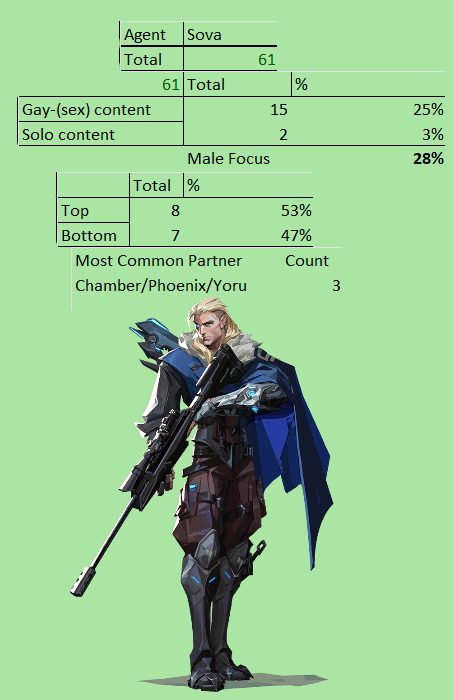

I made earlier this year for the R platform but, here the vibes are better
#give me my well deserved gay Agent : (#gay#lol#data#data analytics#shitpost#analisys#valorant#memes#cypher#valorant omen#gay memes#annoying the straights#gayming#gaming#video games
61 notes
·
View notes